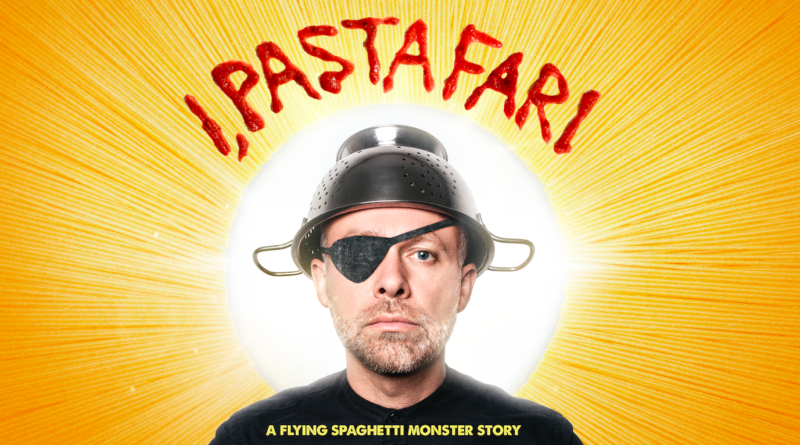REVIEW: ‘I, Pastafari,’ an inside look at the Church of the Flying Spaghetti Monster
Photo: Courtesy of Gravitas Ventures / Provided by MPRM Communications with permission.
There is much debate in the new documentary I, Pastafari on whether the Church of the Flying Spaghetti Monster is an actual religion or merely a satire of religion. Although some of the arguments both for and against are certainly interesting to hear about, the real pleasures of this doc can be found in the general conversations concerning the separation between church and state, or the lack thereof, in the 21st century. For the civically-minded viewer, I, Pastafari presents an engaging (and let’s be honest, entertaining) look at how founding documents and principles, such as freedom of religion, are interpreted and what place belief systems have in the modern age.
Michael Arthur’s film, which is now available digitally, looks at several practitioners in the Church of the Flying Spaghetti Monster — practitioners otherwise known as Pastafarians. This is a belief system built around, well, a flying spaghetti monster. Some of the faithful dress as pirates, while others don a colander as a ceremonial head covering. Instead of “Amen,” they say “R’amen.” Its critics say the whole institution is a joke (note: Amazon lists one of its founding books under “Religious Humor”), while some of the Pastafarians interviewed in the film are dead serious about their faith.
The main narrative thrust of the film is whether a Pastafarian can wear a colander on his head for a driver’s license photo in the Netherlands, plus a few other legal challenges the faithful have faced. The only exception to a head covering in the Netherlands is if it’s for religious reasons, so when the case goes before a judge, essentially the church and its beliefs are put on trial.
Pastafarianism was apparently started by a graduate student named Bobby Henderson in 2005. Its central principles are light-hearted in nature — or are they? The devotees in the film don’t find their beliefs any more outrageous than other more established faith traditions, and they do not want to see a newfound church-state cosiness that favors religion over science.
The documentary has a large segment about the so-called Scopes Monkey Trial in the 1920s that saw schoolteacher John Scopes facing jail time in Tennessee for teaching evolution. Pastafarians, so the film contends, are outraged that Creationism / Intelligent Design still has a hold in the American public education system and that evolution seems to constantly face a challenge for acceptance.
Thus, the Church of the Flying Spaghetti Monster seems to be a faith built upon the tongue-in-cheek criticism of other faiths, and it tries to give solace to those who believe secular and sacred should stay separate.
These debates and considerations are fascinating, and Arthur’s film, although definitely buying into the humorous aspect of a flying spaghetti monster as a deity, relishes the chance to engage the viewer on these questions. That’s a clever narrative technique, one seemingly adopted by the church itself: give off the impression that this is one big joke, but let the audience figure out that several crucial concepts are just beneath the pasta sauce. Or are they?
By John Soltes / Publisher / John@HollywoodSoapbox.com
I, Pastafari (2020). Directed by Michael Arthur. Running time: 56 minutes. Rating: 




